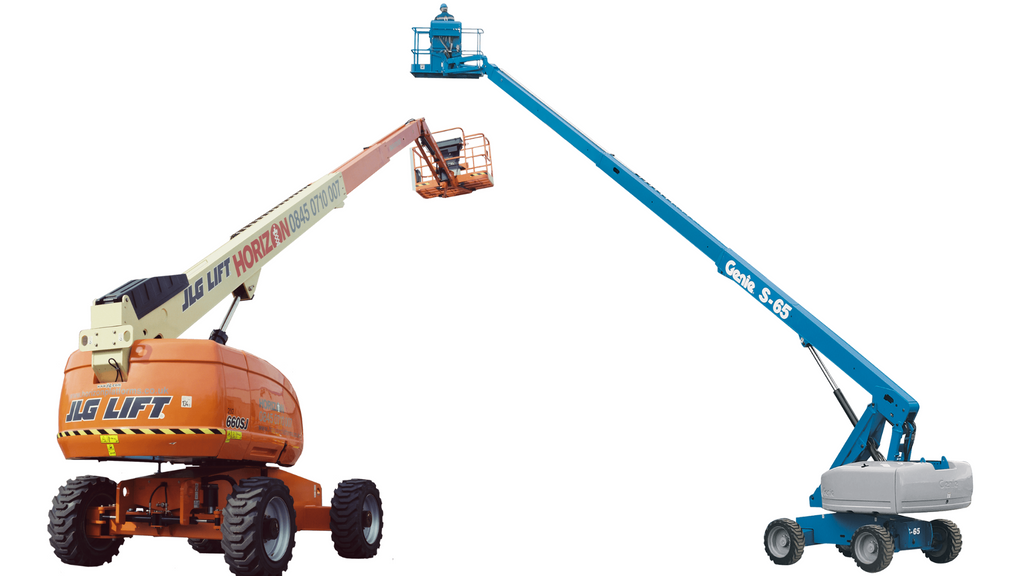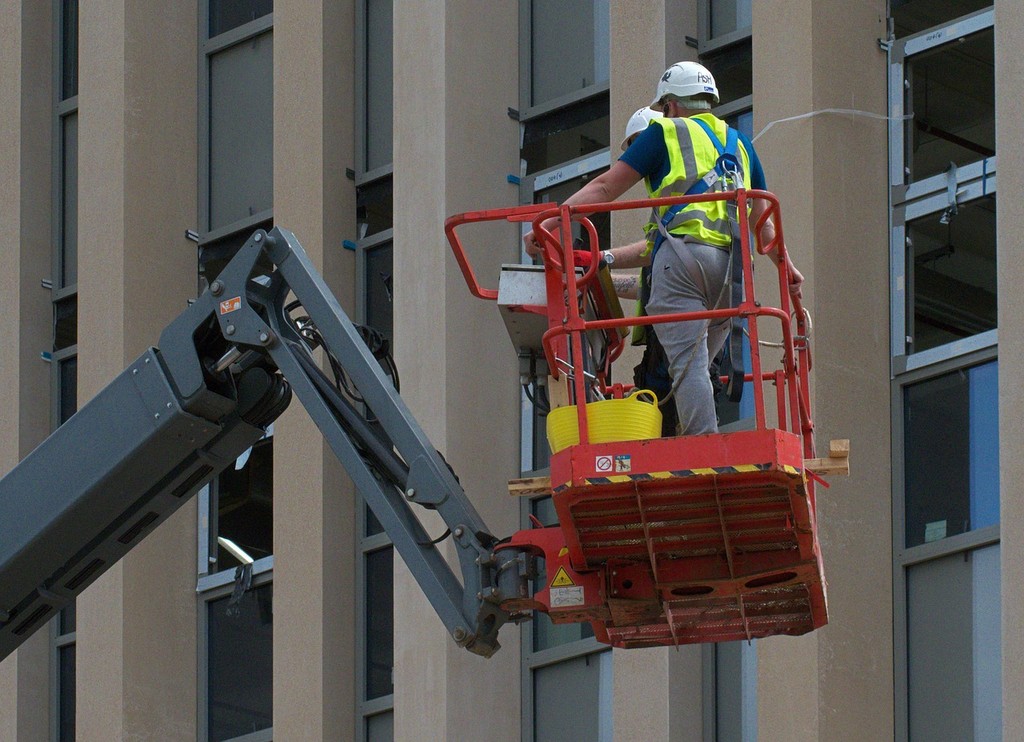When planning a work-from-height project, you’ll likely want to consider a variety of MEWPs to help you complete the task in hand. If so, we’d like to suggest telescopic booms as a contender for the best boom lift for the job.
Reading on, we’ve explored the practical uses of telescopic booms, to give you an idea of whether this piece of equipment is the right fit for your next project.
1. Construction
For significant construction work, telescopic boom lifts come into their own thanks to their extended horizontal and vertical reach.
Though scissor lifts offer excellent stability, you’re limited to up and down movements, which can be restrictive under certain circumstances such as when you need to navigate steel girders.
The manoeuvrability of telescopic booms, on the other hand, allows you to access most areas. Also, oscillating axles navigating rough terrain on early-stage construction sites, for example, can offer greater stability and safety.
2. Sign installation
Installing signs require machinery that can lift workers, tools, and materials with great stability. In this case, it’s well worth considering a telescopic boom: its solid platform allows you to extend straight up to a sign, letting you mount and secure it.
Notably, the additional benefit of a telescopic boom vs a scissor lift is its capacity to navigate obstacles.
3. Film, TV and event production
Whether you’re setting up lights and cameras at a concert or festival, or project-managing the filming of the next drama, you need a machine that’s base can be positioned away from the action while still being within reach of a target.
And there aren’t many better-suited pieces of kit than a telescopic boom lift! Its long, extending arm lets you position a crew high above a crowd or stage – letting them capture the scene without being in the way.
Also, if you’re a rugby or cricket fan, you may have seen TV production companies using something like a Genie S120 or a truck mounted telescopic boom to extend over stands to film the action.
4. Stadium and arena maintenance
Stadium maintenance is made easy (or at least easier!) with the help of an extendable telescopic boom lift, whether you’re replacing floodlights, attending to the scoreboard, or fixing a speaker or roof. You may want choose booms like the JLG 860SJ, for example.
With this nifty piece of machinery, reaching required elevation is a simple task, while the excellent manoeuvrability means you’re also able to navigate great lengths of the stadium or arena’s infrastructure without constantly moving the base.
5. Installing scaffolding
On the whole, scaffold erectors won’t need telescopic booms, but they will for those occasions when it is safer for the installation or dismantling of ties, bracing or other components.
6. Painting high walls and ceilings
Whether you’re adding the details to a huge outside mural or simply adding a fresh lick of paint to the external walls on a large building, telescopic boom lifts offer a helping hand, giving you extended coverage.
This means you’re able to work across a vast area without having to get down and move your machine. If you’re thinking a scissor lift is also suitable for this type of work, you’d be right; but scissors can only go straight-up! So, a telescopic boom’s vertical and horizontal reach allows you to go up and over many obstacles.
7. At-height building maintenance
Building maintenance can be a tricky task when you need to reach extreme heights, so it’s important to consider various types of MEWPs to find the best assistive machinery. Telescopic boom lifts are a great contender, with workers able to extend the boom to work across a wide area with ease.
8. Electrical work at height
At-height electric work can be a tricky task, especially if you don’t choose the right access equipment; safety is paramount, and you often need to pick a MEWP with the right extended reach. With the telescopic boom and its long extendable boom arm, you can access hard-to-reach electrical wiring or tall streetlights, for example.
9. High roofing repairs
Whether it’s a case of fixing leaks or replacing tired looking panels on a warehouse or factory, reaching the top of a larger building often means overcoming obstacles like loading bays. Fortunately, a telescopic boom offers extended height and reach, allowing you to go up-and-over any obstruction, to reach the area you need.
10. Fruit picking
A telescopic boom lift is a type of cherry picker, named by Jay Eitel after he invented an aerial lift for picking his cherries. So, it makes sense to add an agricultural advantage to this list! Although these days cherry picking might not always feature a boom, you may see tree surgeons and arboriculturists using rough terrain telescopic booms occasionally.
As is the case with all the uses listed above, the main advantage of using a telescopic boom lift over other types of MEWPs is the reduced need to reposition your base, greater outreach, and high elevation capabilities, which is a real time-saver.
Hopefully, you now feel a little more clued up on the uses of telescopic boom lifts! However, if you’re interested in learning more, don’t hesitate to contact our team of experts who’ll be more than happy to help. Or discover even more MEWP insights over on our blog, such as our guide to choosing between an articulating and telescopic boom lift.


